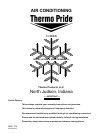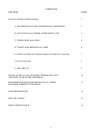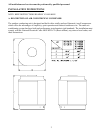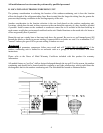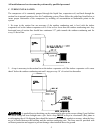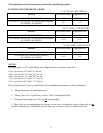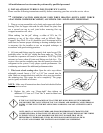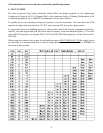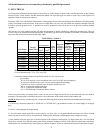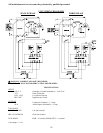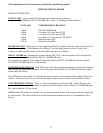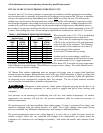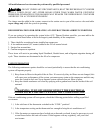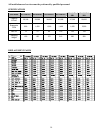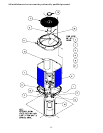
All installations and services must be performed by qualified personnel.
12
INITIAL START UP OF OUTDOOR CONDENSING UNIT
On cooler days (65° F or lower), attempts to operate the air conditioner and take gauged pressure readings
may be unsuccessful, as unusually low pressures will be observed on the suction line. This type of operation
may give the impression of an undercharged unit. Such is NOT necessarily the case. The low-pressure
reading may exist because of the large condenser surface area and the cold ambient air removing so much
heat from the refrigerant. Sub-cooling occurs and results in very low pressures. Adding refrigerant in cold
weather will result in an overcharged unit, which may then trip out on high pressure limit during warm or
hot weather. Line pressures should not be taken for test purposes when the outdoor temperature is below 70°
F since a false reading may occur. Do not attempt to operate the air conditioner on a day of 45° F or cooler.
When an inside temp. of 76– 78ºF is reached then
superheat measurement must be between 8 –
10ºF. This is done by comparing the gauge temp.
of R-22 on the suction line to the measured temp.
on the low side of the condenser. The difference
is the superheat. If the superheat is less that 8 ºF
decrease charge. If the superheat
is more than 10ºF then increase charge.
Another check on system charge, would be to
measure the temperature of the liquid line leaving
the condenser and it’s R-22 gauge temperature.
For proper operation, the measured liquid temperature will be about 10ºF lower than its gauge temperature.
If the difference is less add charge. If the difference is greater remove charge. The system should run for
at least 10 minutes before rechecking.
All Thermo Pride outdoor condensing units are equipped with gauge ports to connect both liquid and
suction line pressure gauges. Refrigerant hoses must be the type which incorporate a "finger" to depress the
core. Connections may be made to ports at any time; even while unit is in operation. Follow EPA guidelines
in connecting service equipment to refrigerant lines. For example: The use of quick connects and short
service hoses are recommended to minimize refrigerant losses.
: Refrigerant is under pressure. Guard against refrigerant spraying into the face or on
skin. Always wear protective equipment, i.e. safety glasses or goggles and gloves when working with
refrigerant.
Line pressures on an operating air conditioning unit will vary with outdoor temperatures. As outdoor
temperatures rise, pressures will also rise. See pressure temperature chart for system line pressures at
different temperatures.
The suction pressure is the most significant when reading gauges. If a unit is suspected of low charge, unit
should be recharged using the suction pressure as a guide. Unit is fully charged when proper suction
pressure is obtained. Any additional refrigerant may cause damage or additional problems.
The pressure/temperature chart on the wiring diagram is to serve only as a guide. Pressures shown are
realistic averages, which will vary somewhat with changes in air temperatures, air volume across the
evaporator coil, condenser coil, and changes in humidity - both inside and outside, and variations in line
length.
TABLE 1: APPROXIMATE OPERATING PRESSURES
Inside Temp. vs.
Suction Press.
Outside Temp. vs. Liquid
Press.
INSIDE
TEMP.
(ºF)
SUCTION
PRESS.
(P.S.I.G.)
OUTSIDE
TEMP.
(ºF)
LIQUID
PRESS
(P.S.I.G.)
65 60 70 163
70 67 75 176
72 70 80 190
74 73 85 205
76 76 90 220
80 83 95 236
85 91 100 253
90 100 105 271



